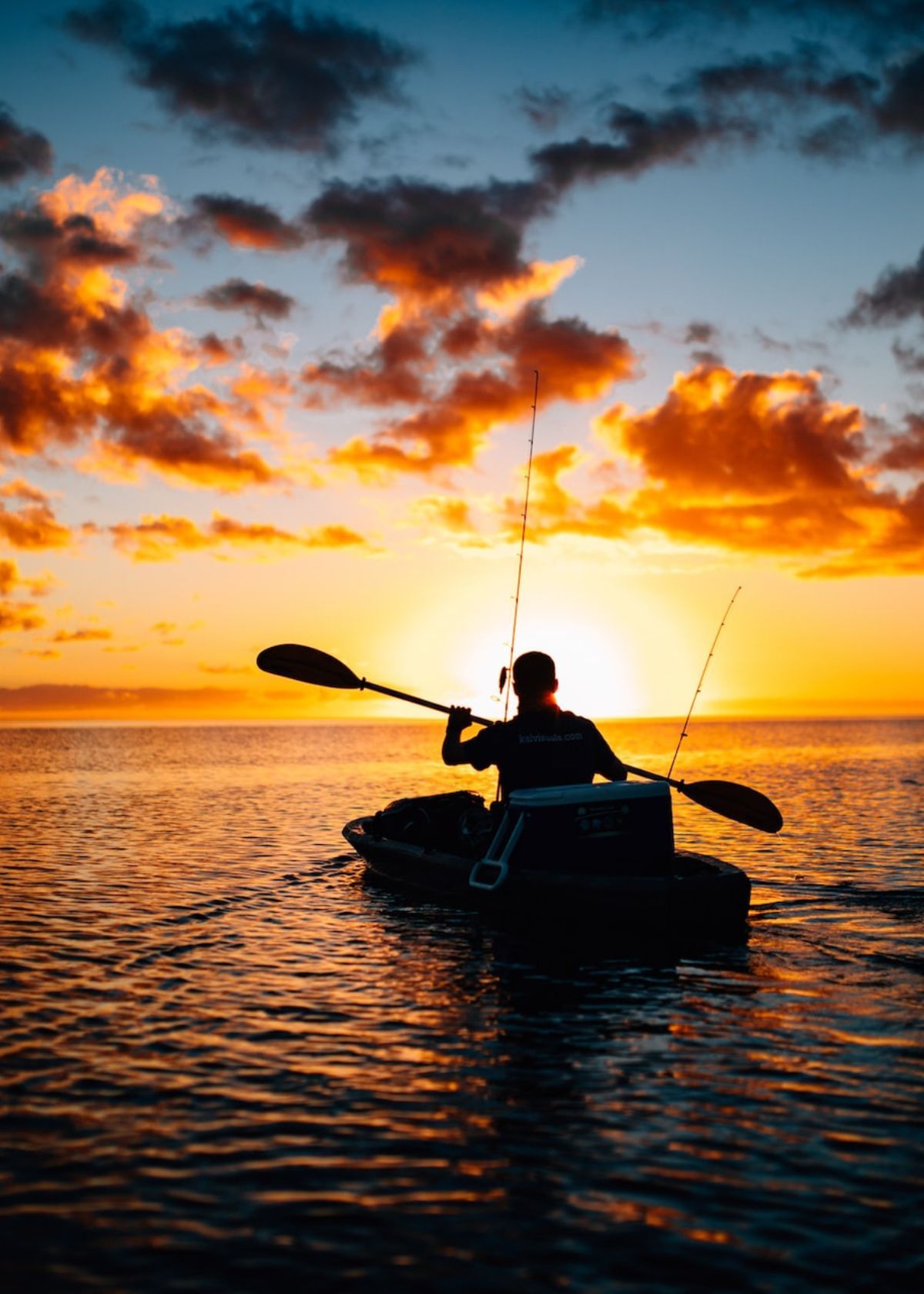Ready to take your fishing game up a notch?
Fishing from kayaks is an exciting way to get out on the water and explore new areas. You can also use a kayak for stealthy stalking of hard-to-catch fish in skinny water. Whether you’re looking for largemouth bass, trout, or even catfish, there are plenty of great spots hidden away from traditional boats where kayak fishing excels!
With our guide to how to kayak fish, you'll learn all the insider tips and tricks that will have you feeling like a veteran angler in no time. Learn about the best gear for your adventure, as well as some basic safety tips before heading out on the open waters with your trusty little boat.
Soon enough you'll be back home with fresh catches and plenty of stories - all thanks to learning how to Kayak Fish!
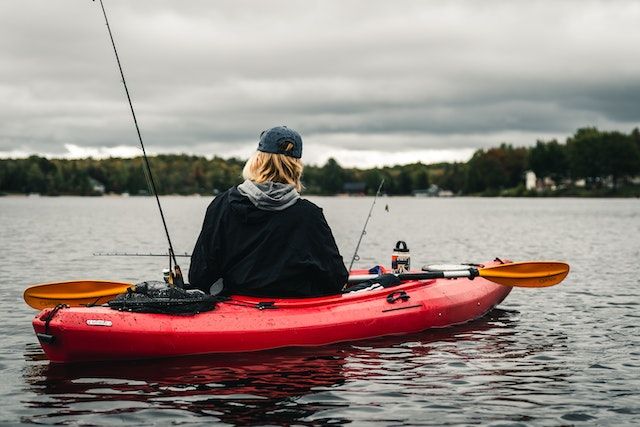
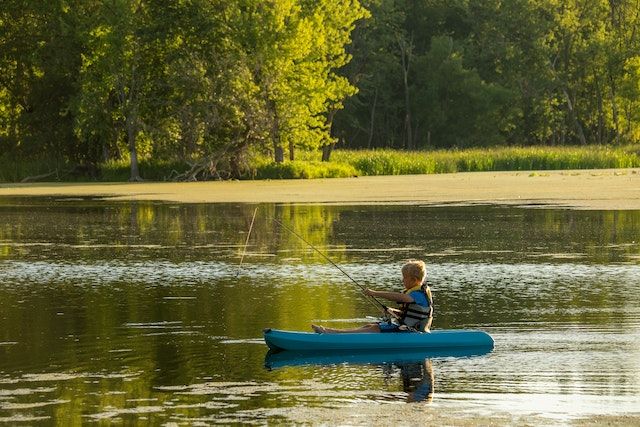
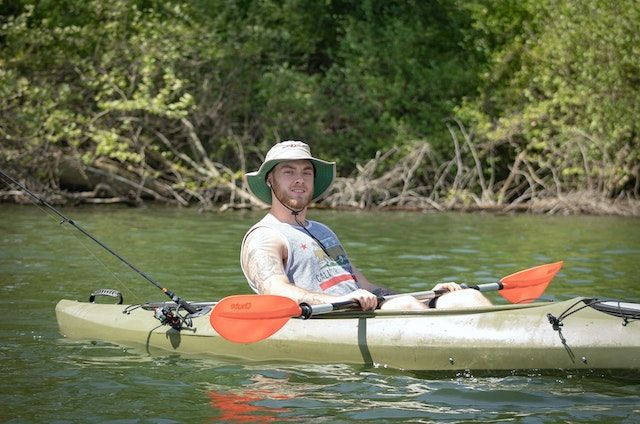
Benefits Of Kayak Fishing
Imagine sitting on the water in a boat just floating around, letting the current take you down stream. Then you come across a school of fish, drop your line and wait for one to take a bite. Kayak fishing is one of the most relaxing ways to enjoy the great outdoors.
We've compiled a list of our Top 7 Benefits of Kayak Fishing:
- Remote Areas are Easily Accessed - Kayak fishing provides more opportunity for access to areas that are often difficult to reach by boat or on foot. Due to the size and shape of the kayak they are extremely maneuverable.
- Lightweight & Portable - Kayaks are much lighter than a regular fishing boats by design, which makes them easier to transport and store them.
- Flexibility to Fish from Multiple Angles - The straightforward construction of a kayak allows anglers to fish from multiple angles that would not be possible with larger boats. This increases a fisherman's chances of success dictated by the current and fish location.
- Environmentally Friendly Fishing - Since kayaks don't have engines, they cause less damage to the environment than other types of boats and water crafts.
- Cost-Effective Fishing - Kayak fishing is very cost-effective because the equipment needed is usually less expensive than boats and motors.
- Increased Control and Stealth - With a kayak, anglers can maneuver quickly and silently in order to get into position before their targets become aware of them.
- Fun Way To Enjoy Nature - Perhaps one of the best benefits of kayak fishing is the ability to enjoy nature while participating in an enjoyable sport!
How To Kayak Fish (Beginners Guide)
Select the right type of Kayak - When selecting a kayak for fishing, you'll need to think about size and width. Most fishing kayaks are between 10 and 14 feet. Shorter kayaks are easier to maneuver but are made for just a single passenger.
When it comes to width, wider kayaks offer more stability on the water while narrower kayaks allow you to paddle faster. Stability is an important factor to consider if you are new to the experience of fishing from a kayak. You should also make sure that there is enough room on the kayak to mount fishing rod holders and store tackle.
Wear moisture-wicking clothes - You are much closer to the water in a kayak, so be prepared to get wet every once and awhile. It's a good idea to wear moisture-wicking clothing that dries quickly and have a dry change of clothes stored in a waterproof bag or box. Check the kayak fishing gear you can take to your next fishing trip.
Practice just paddling - If you haven't used a kayak before, practice paddling and navigating your kayak on a familiar waterway near your home. This way, you can gain experience and confidence before bringing your fishing rods aboard.
Use a paddle leash - Check to see if your kayak comes with a paddle leash. If not, may want to consider buying one so that your paddle stays secured to a cleat or eyelet while you are fighting a fish.
Tips & Tricks
Casting From A Kayak
Your first time casting from a kayak will probably feel a little awkward. The boat is going to wobble around which might have you believe it is unstable and ready to flip. It might sound easier said than done, but you have to remember to relax and trust your boat for what it was built for.
Your kayak design has what is called initial and secondary stability. Initial stability is the boat sitting flat in the water as you paddle around. Secondary stability occurs when the boat leans, such as when you make a dramatic movement. This is the stability you have to trust.
When we say relax, we mean loosen up the lower half of your body and let the boat roll side to side below your waist. Ease up on your casts while you are getting comfortable with this. Make nice easy lobs. Practice staying loose in the boat and getting your lure to land softly in the water.
If your fishing kayak has a wide platform design, like the Topwater we mentioned earlier, you may one day feel confident to make standing casts, which is a great way to increase your line of sight and casting distance. If you try this, remember to stand with feet wide apart, bend your knees, and stay loose below your waist for the same reasons as above.
Paddling Skills
Paddling is half the fun (and challenge) of kayak fishing. Proper strokes will help you move effectively toward your intended destinations, especially when facing strong wind or current. Correct paddle strokes also save you energy for the fight on the end of your line.
The forward stroke is the stroke you will use more than any other. It provides the motor to take you where you want to go. Here are a few tips on the forward stroke:
- Look where you want go.
- Place paddle blade in the water near your toes, or as far as comfortable without over-extending yourself.
- Allow the blade to submerged in the water before pulling back on it.
- When pulling the paddle blade through the water, use your large muscle groups in your torso rather than your smaller muscle groups in your arms. You can accomplish this by twisting your torso to move the blade. Think about the way you would twist to pull the starting cord on a lawn mower.
- Unless you will also use a stroke to steer, you should slice the blade out of the water around your hip to avoid carrying it too far.
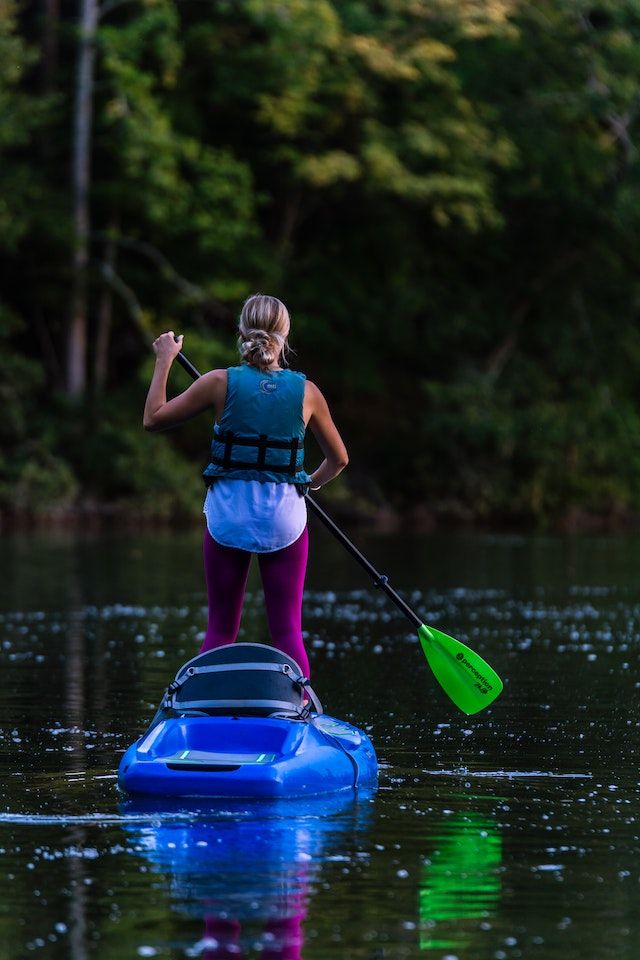
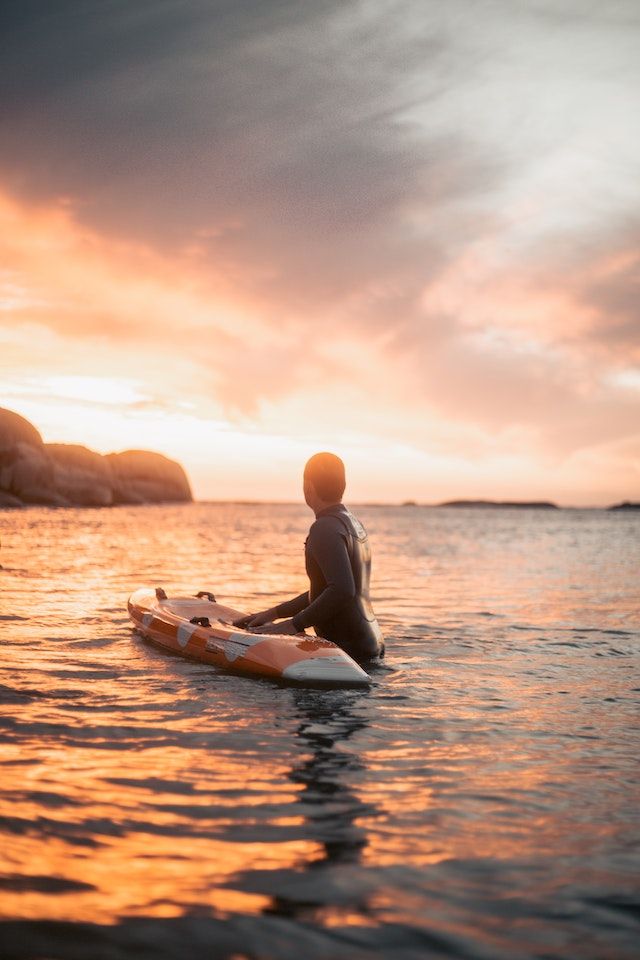
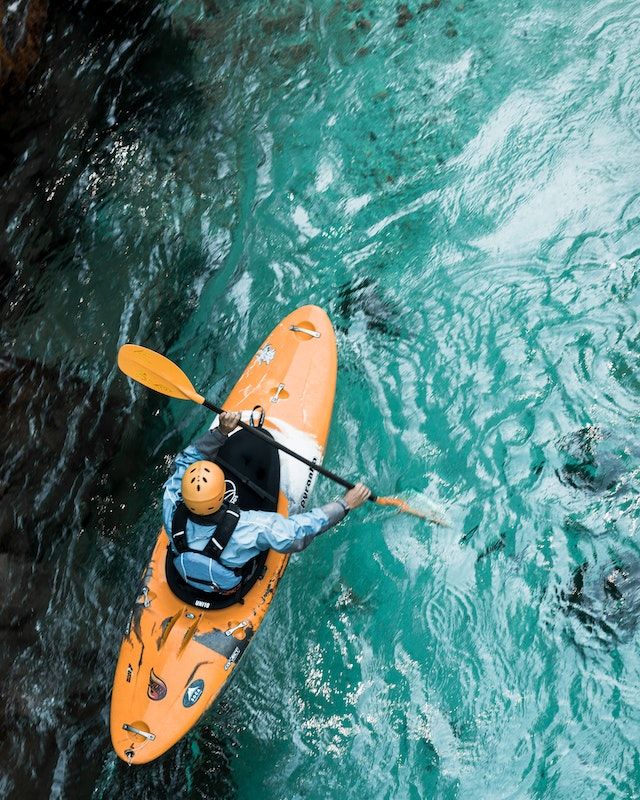
Best Gear For Kayak Fishing
- Kayak : Choose an appropriate kayak for your particular type of fishing.
Sit-on-Top Kayaks - These are popular for recreational and ocean kayak fishing. They provide the most stability and ease of use in calm water.
Inflatable Kayaks - These provide convenience as they can be easily folded up to store or transport. They are lightweight and typically used for flatwater angling.
Pedal Kayaks - These are powered by pedals instead of paddles and allow you to move more freely while on the water.
Fishing Kayak - Fishing kayaks feature built-in rod holders, tackle boxes, seating systems, and other angler-friendly features designed to make navigating the waters easier and more enjoyable.
- Rods and Reels : Make sure the rods and reels are suited to the kind of fish you are targeting.
- Tackle Boxes : Bring several tackle boxes that are waterproof or water resistant to keep your lures, hooks and bait safe.
- Anchors : Use small anchors to help keep your kayak in one spot.
- Bait Tanks : Install a bait tank to store live bait or chum.
- Navigation Tools : Bring navigation tools such as a compass, GPS, or even an app for your phone.
- Safety Gear : Wear a life jacket at all times and bring extra safety gear such as flares, first aid kit, etc.
Kayak Fishing FAQs
Fishing from a kayak can be a lot of fun, but it's also a new experience for many people.
If you're new to kayak fishing, you probably have some questions about the sport. What kind of kayak should I buy? What are the best fishing spots? How do I catch fish from a kayak?
We've got the answers to all those questions and more.
What is the best type of kayak for fishing?
The best type of kayak for fishing depends on the type of water you plan to fish in, as well as your budget and preferences. Generally, sit-on-top kayaks are more stable and easier to maneuver than sit-in models, making them ideal for beginners. For experienced anglers, a sit-in model offers more stability and storage space for gear.
How do I rig my kayak for fishing?
Rigging your kayak for fishing involves adding accessories such as rod holders, tackle boxes, bait buckets, and anchor systems to make your time on the water more efficient and enjoyable. Depending on your needs, you can customize your rig with different types of accessories or purchase pre-rigged models that come with everything you need already installed.
What safety precautions should I take when kayak fishing?
Safety should always be a priority when kayaking or fishing from a kayak. Wear a personal flotation device (PFD) at all times while on the water and make sure it fits properly so it won't slip off during an emergency situation. Additionally, bring along a whistle or other signaling device in case you need help from another boater or shoreline observer.
What type of bait should I use when kayak fishing?
The type of bait used when kayak fishing depends largely on the species of fish being targeted and their preferred food sources in the area where you're fishing. Live bait such as worms or minnows is often used to target panfish like bluegill or crappie, while artificial lures like crankbaits or jigs can be used to target larger gamefish like bass or walleye.
How do I transport my kayak?
Transporting your kayak can be done using either a trailer hitch mounted rack system or roof rack system depending on the size of your vehicle and how much weight it can handle safely without compromising its performance or fuel economy. If neither option is available, there are also inflatable carts designed specifically for transporting boats that can be towed behind most vehicles with ease.
Kayak fishing is an enjoyable and adventurous way to spend your time on the water. From a leisurely day of sight-seeing to an all-day tour, paddling through the waters can offer a unique viewpoint from which to observe nature.
Not only is it great exercise, but you may find yourself catching year-round fish, too! With the right gear and basic knowledge of local regulations, you can have fun kayak fishing with friends and family in no time.
We've done the research so you don't have to! To browse our Top Picks for Best Kayak Fish Finders please click the link below!

Your Friends,
LoveNatureReviews Team


